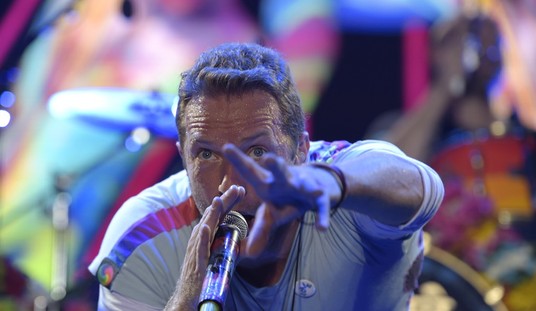A moment of real introspection from President Barack Obama (or perhaps Valerie Jarrett)? Not really, no. After a flop in his attempt to spin the midterm elections as unconnected to his presidency on Wednesday, Obama offered a slightly different deflection to Bob Schieffer on yesterday’s Face the Nation. Despite declaring a month ago that “every single one … of my policies” was on the ballot last Tuesday, Obama now says that he takes responsibility for the failure in Democratic Party politics that led to the worst midterm election in decades for Democrats:
President Obama on Sunday tersely summarized Democratic losses in last Tuesday’s midterm elections, saying simply, “We got beat.”
Obama said the buck ultimately stops with him during an interview with CBS’s “Face the Nation,” his first Sunday show appearance since September.
“And so whenever, as the head of the party, it doesn’t do well, I’ve got to take responsibility for it,” Obama said. “The message that I took from this election, and we’ve seen this in a number of elections, successive elections, is people want to see this city work.”
He was reacting to critical comments made by Senate Majority Leader Harry Reid’s (D-Nev.) chief of staff, who pointed to Obama’s low approval rating as one explanation for losses on Election Day.
Schieffer pressed him on getting ripped by Harry Reid’s office as the reason for the collapse on Election Day. Obama responds by stammering through a few versions of Harry Truman’s “The buck stops here,” which for some reason Obama can’t quite quote correctly, before allowing that the head of the party who just got its knees cut off by the voters might bear some responsibility for the loss.
However, Obama insists that the voters didn’t oppose his policies, but his supposed lack of interest in sales pitches. Obama argues that the failure in the midterms and his approval ratings relate to “a failure of politics there that we’ve got to improve on. … I think we have not been successful in going out there and letting people know what it is that we’re trying to do and why this is the right direction.” No one who has any connection to politics can argue with a straight face that this White House lacks for messaging effort, though; they impose strict discipline on messaging, aggressively challenge any criticism, and have plenty of proxies making media appearances on their behalf. Obama spent most of the midterm cycle making speeches at fundraisers, pushing his messaging and his policies. And yet, during that same period, Obama’s numbers plunged and the illusion of competence in his administration disintegrated.
In other words, voters rendered a substantive verdict, not a public-relations verdict. Plus, the notion (first floated by Harry Reid) that the loss was a signal for bipartisanship is complete bunk. The only incumbents handed their walking papers in the Senate were Democrats, who didn’t even win one of the open seats vacated by Republicans in this cycle. On the contrary, Democrats lost almost every open seat vacated by their own members [correction: not Michigan] and didn’t come close in what had been presumed to be razor-thin races. One could have made that argument about the 2012 election, in which voters left the status quo in place. Clearly, though, voters got tired of Democrats, and not just because of their politics.
At least Obama didn’t blame the loss on “a flawed computer model“:
The Daily Beast has learned that in the crucial swing states of Iowa, North Carolina, and Colorado, the DSCC made a decision in September to put an increased emphasis on persuasion, talking undecided voters into supporting Democratic candidates rather than turning out its base voters. In other words, instead of going after the type of people who reliably vote Democrat but don’t reliably show up on Election Day, they focused on voters who were somewhat more likely to vote but hadn’t firmly made up their minds
These undecided, persuadable voters were identified via a computer model that ranked and ordered voters as targets of persuasion not just through volunteer contact but through direct-mail paid media as well. The problem was that, at least in Iowa, this model was imperfect.
According to information obtained by The Daily Beast, the universe of persuasion targets in the Hawkeye State according to this model included 33 percent Republicans and 50 percent independents. These voters were contacted by volunteers and received at least 10 different pieces of direct mail in addition to whatever television and radio advertisements they saw or listened to. Initial data indicate that more than 60 percent of voters in this group who actually turned out on Election Day supported Republican candidates.
This was compounded by making overly optimistic assumptions about independent voters who had signed up for absentee ballots in Iowa. Internal Democratic estimates projected that Bruce Braley, the losing Senate candidate in Iowa, would have a lead of roughly 28,000 votes going into Election Day based on absentee ballots. Instead, he only won early voters by 18,000 votes. This difference: Braley was projected internally to be getting support from 65 percent of independents who voted early; he ended up much closer to 50 percent.
I don’t mean to dismiss Ben Jacobs, whose report is detailed and is worth reading, but the premise doesn’t much pass the smell test. Both parties in Iowa know how to turn out their base, and Iowa voters tend to be politically active anyway. Braley was a lousy candidate who alienated Iowa voters, and sixth-year midterms are almost always heavily influenced by national trends. If the Iowa Democratic base really needed that much goosing to avoid an 8-point drubbing from Joni Ernst, then the election was a lost cause regardless of what computer model they put into use.
The full Face the Nation interview with Obama is here:
Update: I erred in saying that Democrats lost every open Senate seat vacated by their own party. They easily hung onto Michigan, which was vacated by the retirement of Carl Levin. I’ve corrected it above.








Join the conversation as a VIP Member